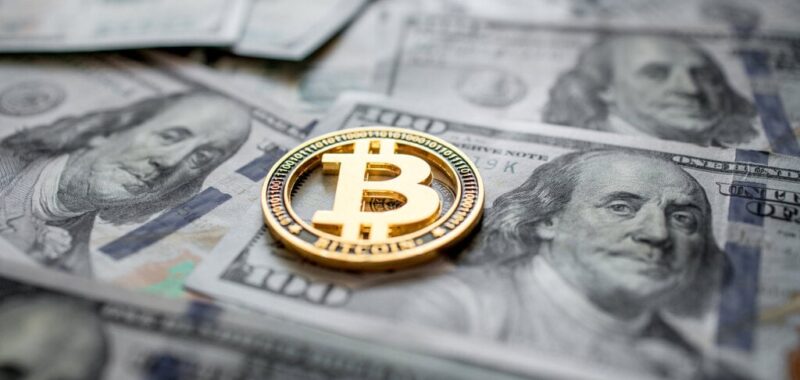A series of disastrous economic results published on Friday has onlookers believing the United States economy is quickly spiraling into recession. But while the news initially coincided with a dip in the price of crypto assets, analysts say that a weaker U.S. dollar could ultimately benefit Bitcoin over the long term.
The stock market tumbled Friday following the poor reports, with Bitcoin and other major cryptocurrencies following suit. Bitcoin’s price briefly jumped to $65,400 but then fell sharply, dipping to about $62,350 as of this writing. Nearly all of the top 100 cryptocurrencies are down on the day, excluding dollar-pegged stablecoins.
According to the Bureau of Labor Statistics, the nation’s unemployment rate rose to 4.3% in July, up from 4.1% in June. Meanwhile, non-farm payroll employment rose by a meager 114,000 jobs, well under the 175,000 new jobs expected by economists, as polled by Reuters.
The underwhelming reports pushed some market analysts and observers to declare that the long-theorized recession may finally be taking root in the United States.
“The recession has arrived. Inflation will soon spike,” tweeted financial commentator and noted Bitcoin critic Peter Schiff on Friday. He added that this is “one of the weakest labor markets in history.”
The tech-heavy Nasdaq took a hard hit, falling nearly 2.5% as of this writing, with the S&P 500 and Dow both down nearly 2% each. Recessions are generally viewed unfavorably for stocks since they mean less income for businesses. But Bitcoin could break away from stock market shifts in such an environment.
“This is the type of environment that could be conducive for Bitcoin to decouple from equities,” said Reflexivity Research co-founder Will Clemente on Friday. Unlike stocks, BTC has no earnings, he argued—with its price instead being “purely tied to liquidity.”
James Butterfill, Head of Research at CoinShares, agreed with that assessment, even despite an immediate price hit.
“The initial Bitcoin price reaction has been in line with other risk assets, but we don’t see this continuing in the longer term,” Butterfill told Decrypt. “It is likely we will see the Bitcoin price diverge from equities once we see corporate margins being squeezed by low consumer demand.”
In fact, liquidity may soon be coming. July’s poor jobs numbers have the market extra confident that the Federal Reserve will cut its policy interest rate by 0.5% in September to begin re-strengthening the economy—twice the size initially forecasted.
As such, the U.S. Dollar Index (DXY) cratered 1.11% on Friday, meaning USD is already losing demand relative to other currencies.
Butterfill, however, believes weaker PMI figures, lower CPI, and another poor jobs report will be needed before the Fed will be open to an aggressive 50-basis-point cut.
“With the Fed weakening monetary policy, it will be supportive for fixed-supply assets such as Bitcoin and gold,” he concluded.
When the Fed last cut interest rates in April 2020, Bitcoin’s price began a historic run from $8,000 to $64,000 over the following 12 months.
The Bank of England and Bank of Canada began cutting interest rates again in June, while the Bank of England announced its first cyclical rate cut earlier this week.
Edited by Andrew Hayward
Disclaimer
The views and opinions expressed by the author are for informational purposes only and do not constitute financial, investment, or other advice.

